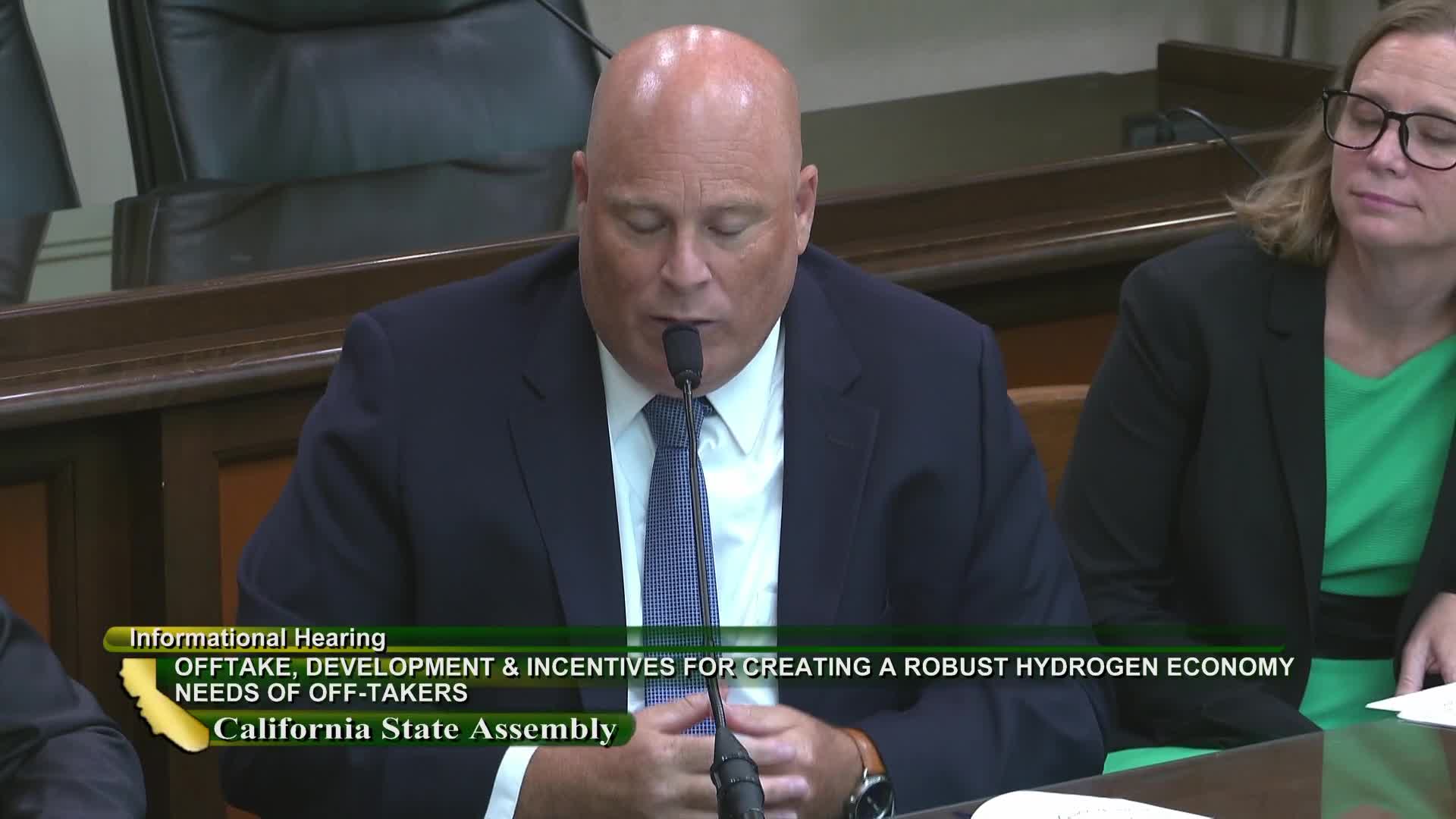Los Angeles commits to green hydrogen for clean energy future
August 06, 2024 | California State Assembly, House, Legislative, California

This article was created by AI summarizing key points discussed. AI makes mistakes, so for full details and context, please refer to the video of the full meeting. Please report any errors so we can fix them. Report an error »

In a recent government meeting, officials outlined a comprehensive strategy for transitioning to renewable energy, emphasizing the necessity of a multifaceted approach that includes solar, wind, and hydrogen technologies. The discussions highlighted the importance of maintaining existing power plants to ensure a reliable energy supply, particularly during emergencies or extreme weather conditions when renewable sources may be insufficient.
The stakeholders involved in the study identified hydrogen as a key pathway for achieving a cleaner energy future. By utilizing hydrogen in combustion turbines, it is projected that carbon emissions could be entirely eliminated, significantly improving air quality. This transition is not only seen as an environmental imperative but also as an opportunity to sustain and create jobs within the community.
Los Angeles has committed to converting its Scattergood Power Plant to be hydrogen-compatible by the end of the decade. Initially, the plant will operate on a blend of hydrogen and natural gas, with plans to increase the hydrogen content as technology advances. This initiative is part of a broader effort to phase out coal power sourced from Utah, with a new hydrogen turbine set to begin operations next year.
Officials expressed confidence in the feasibility of these plans, asserting that the transition to green hydrogen is not merely theoretical but a tangible roadmap for the future of local energy production. The meeting underscored the critical role of innovative technologies in achieving sustainability goals while ensuring energy reliability and job continuity for the community.
The stakeholders involved in the study identified hydrogen as a key pathway for achieving a cleaner energy future. By utilizing hydrogen in combustion turbines, it is projected that carbon emissions could be entirely eliminated, significantly improving air quality. This transition is not only seen as an environmental imperative but also as an opportunity to sustain and create jobs within the community.
Los Angeles has committed to converting its Scattergood Power Plant to be hydrogen-compatible by the end of the decade. Initially, the plant will operate on a blend of hydrogen and natural gas, with plans to increase the hydrogen content as technology advances. This initiative is part of a broader effort to phase out coal power sourced from Utah, with a new hydrogen turbine set to begin operations next year.
Officials expressed confidence in the feasibility of these plans, asserting that the transition to green hydrogen is not merely theoretical but a tangible roadmap for the future of local energy production. The meeting underscored the critical role of innovative technologies in achieving sustainability goals while ensuring energy reliability and job continuity for the community.
View full meeting
This article is based on a recent meeting—watch the full video and explore the complete transcript for deeper insights into the discussion.
View full meeting
